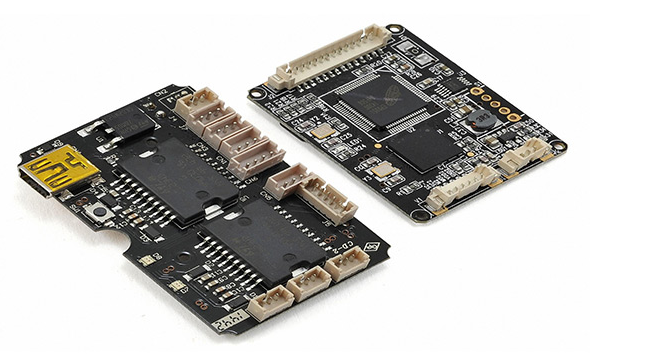In the process of SMT hot air reflow soldering, the solder paste needs to go through the following stages, the solvent volatilizes; the flux removes the oxides on the surface of the soldering parts; the melting and reflow of the solder paste, and the cooling and solidification of the solder paste.
SMT reflow soldering process zone
(1) Preheating zone
Purpose: Preheat the PCB board and components to achieve a balance, and at the same time remove the water and solvent in the solder paste to prevent the solder paste from collapsing and solder splashing. Make sure that the temperature rises slowly and the solvent evaporates. It is relatively mild, and the thermal shock to the components is as small as possible. Too fast heating will cause damage to the components, such as cracking of the multilayer ceramic capacitor. At the same time, it will also cause solder spatter, so that solder balls and solder joints with insufficient solder will be formed in the non-soldering area of the entire PCB.
(2) Insulation area
Purpose: to ensure that the solder can be completely dried before reaching the reflow temperature, and at the same time, it also plays a role in flux activation to remove the metal oxides in the components, pads, and solder powder. The time is about 60 to 120 seconds, depending on the nature of the solder.

(3) Reflow welding area
Purpose: The solder in the solder paste causes the gold powder to melt and become fluid again, replacing the liquid solder to wet the pads and components. This wetting effect leads to further expansion of the solder, and the wetting time for most solders is 60 to 90 seconds . The temperature of reflow soldering must be higher than the melting point temperature of the solder paste, and generally must exceed the melting point temperature by 20 degrees to ensure the quality of reflow soldering. Sometimes this area is divided into two zones, namely the melting zone and the reflow zone.
(4) Cooling zone
The solder solidifies as the temperature decreases, so that the components and the solder paste form a good electrical contact. The cooling rate is required to be the same as the preheating rate.
Various factors affecting welding performance:
1. Process factors:
Pre-welding treatment method, treatment type, method, thickness, number of layers. Whether heating, shearing or other processing methods are used in the time between processing and welding.
2. Design of welding process:
Welding area: refers to size, gap, solder joint gap. Conductor band (wiring): shape, thermal conductivity, heat capacity. Welded object: refers to welding direction, position, pressure, bonding state, etc.
3. Welding conditions:
Refers to welding temperature and time, preheating conditions, heating, cooling rate, welding heating method, and the form of heat source carrier (wavelength, heat conduction speed, etc.)
4. PCB welding materials:
Flux: composition, concentration, activity, melting point, boiling point, etc.
Solder: composition, structure, impurity content, melting point, etc.
Base material: composition, organization, thermal conductivity, etc. of base material
Viscosity, specific gravity, thixotropy of solder paste, substrate material, type, cladding metal, etc.